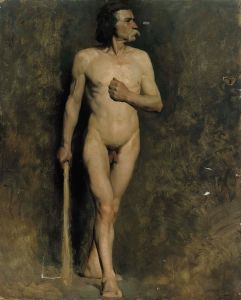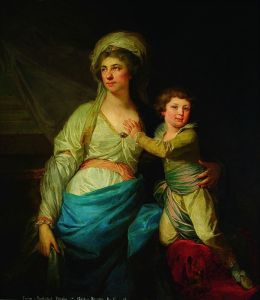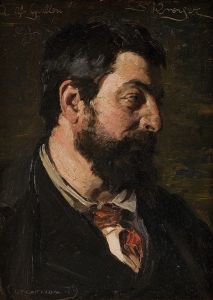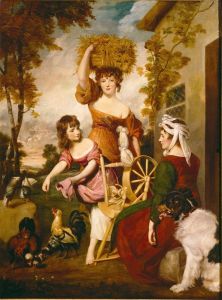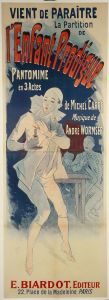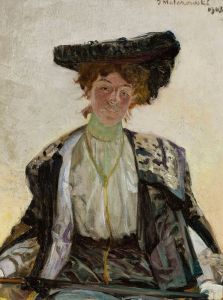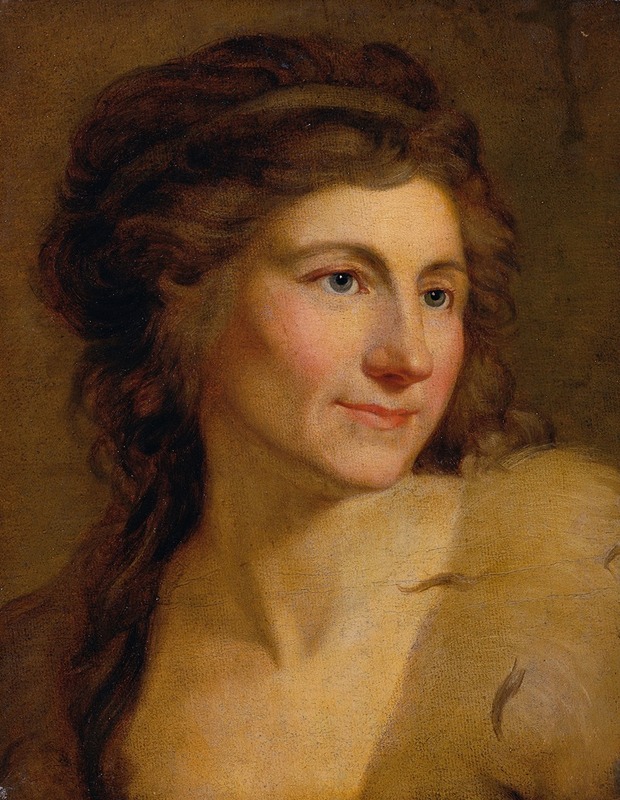
Frauenbildnis
A hand-painted replica of Johann Baptist von Lampi the Elder’s masterpiece Frauenbildnis, meticulously crafted by professional artists to capture the true essence of the original. Each piece is created with museum-quality canvas and rare mineral pigments, carefully painted by experienced artists with delicate brushstrokes and rich, layered colors to perfectly recreate the texture of the original artwork. Unlike machine-printed reproductions, this hand-painted version brings the painting to life, infused with the artist’s emotions and skill in every stroke. Whether for personal collection or home decoration, it instantly elevates the artistic atmosphere of any space.
Johann Baptist von Lampi the Elder was an acclaimed Austrian portrait painter of the late 18th and early 19th centuries. He was born on December 31, 1751, in Romeno, which was then part of the County of Tyrol in the Holy Roman Empire. Lampi is renowned for his portraits of European nobility and significant figures of his time, capturing the elegance and stature of his subjects with remarkable skill.
One of his works, "Frauenbildnis," which translates to "Portrait of a Lady," exemplifies his mastery in portraiture. While specific details about this particular painting are scarce, it is consistent with Lampi's style, which often involved a keen attention to detail and a focus on the character and status of the sitter. His portraits are known for their realistic representation and the subtle use of light and shadow to enhance the three-dimensionality of the figures.
Lampi's career took him across Europe, where he worked in various cultural centers. He initially trained under his father and later studied at the Academy of Fine Arts in Vienna. His talent quickly gained recognition, and he was invited to work at the court of the Polish-Lithuanian Commonwealth. In 1788, he moved to St. Petersburg, where he became a court painter for Catherine the Great of Russia. This position solidified his reputation as one of the leading portraitists of his era.
"Frauenbildnis" likely reflects the influence of the neoclassical style that was prevalent during Lampi's time. Neoclassicism was characterized by a return to classical ideals of simplicity and symmetry, drawing inspiration from the art and culture of ancient Greece and Rome. Lampi's portraits often exhibit these qualities, with a focus on clarity, order, and restrained elegance.
The subjects of Lampi's portraits were often members of the aristocracy or individuals of high social standing. His works were not merely representations of physical likeness but also conveyed the personality and social status of the sitter. This was achieved through the careful depiction of clothing, accessories, and background elements, which were chosen to reflect the individual's identity and position in society.
Lampi's contribution to portrait painting was significant, and his works remain appreciated for their artistic merit and historical value. His ability to capture the essence of his subjects made him a sought-after artist among the European elite. Today, his paintings are held in various museums and private collections, where they continue to be studied and admired for their technical proficiency and insight into the cultural context of the time.
While specific information about "Frauenbildnis" is limited, it is representative of Johann Baptist von Lampi the Elder's broader body of work, which has left a lasting impact on the art of portraiture. His legacy is evident in the continued appreciation of his paintings, which offer a window into the lives and personalities of the people he portrayed.





